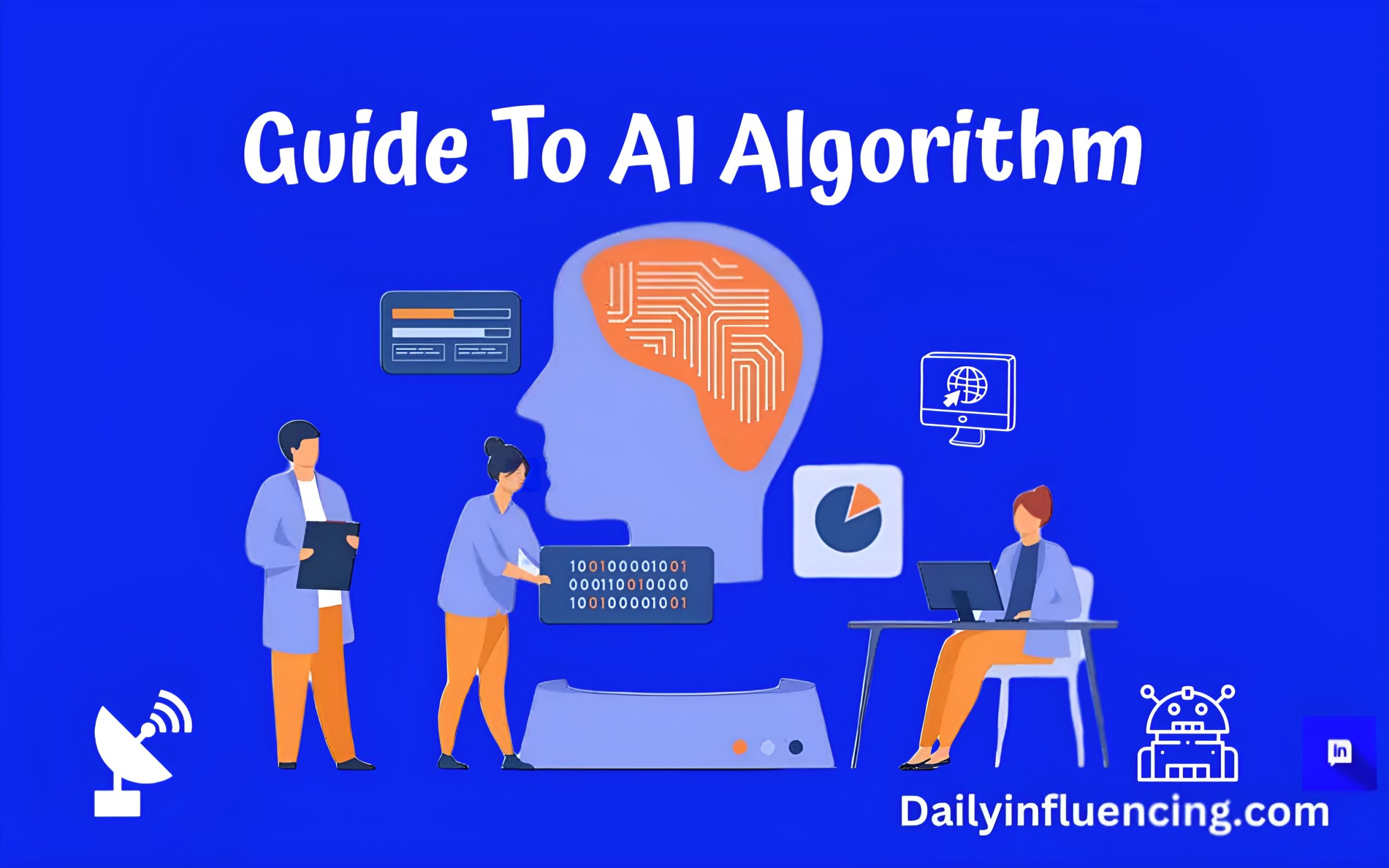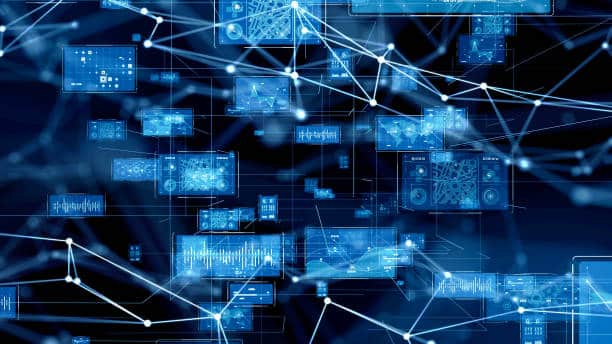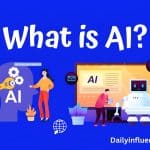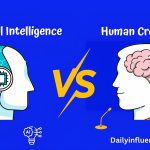
Have you ever wondered how your phone recognizes your face, how Netflix suggests the perfect movie, or how self-driving cars navigate busy streets? The answer lies in something called an AI algorithm. This guide to AI algorithm will take you on a fascinating journey into the world of artificial intelligence, breaking down complex ideas into simple, easy-to-understand concepts. Whether you’re someone just starting to explore technology or small business owners, this guide will help you understand how AI algorithms work and why they are so important in our daily lives.
An AI algorithm is like a recipe for a computer. Just as a recipe tells you how to combine ingredients to make a delicious meal, an algorithm gives step-by-step instructions to a computer to solve a problem or complete a task. These algorithms are the backbone of artificial intelligence, enabling machines to learn, think, and make decisions. In this guide to AI algorithm, we’ll explore what algorithms are, how they work, and the different types used in AI.
Artificial intelligence is no longer just a futuristic idea—it’s here, and it’s changing the way we live, work, and play. From voice assistants like Siri and Alexa to recommendation systems on YouTube and Amazon, AI algorithms are everywhere. But how do they actually work? What makes them so smart? And why are they so powerful? This guide to AI algorithm will answer all these questions and more, giving you a clear understanding of the technology shaping our world.
By the end of this guide, you’ll not only know what an AI algorithm is but also understand how it’s used in real-life applications. You’ll see how these algorithms are trained, how they learn from data, and how they make predictions. So, let’s dive into the world of AI algorithms and uncover the magic behind artificial intelligence!
What Is An AI Algorithm?

To start our guide to AI algorithm, let’s first understand what an algorithm is. An algorithm is simply a set of instructions designed to perform a specific task. Think of it as a roadmap that guides a computer from point A to point B. For example, if you want to bake a cake, you follow a recipe. Similarly, if a computer wants to solve a problem, it follows an algorithm.
Now, an AI algorithm is a special type of algorithm used in artificial intelligence. These algorithms are designed to help machines learn from data, recognize patterns, and make decisions. Unlike traditional algorithms, which follow fixed rules, AI algorithms can adapt and improve over time. This ability to learn and improve is what makes AI so powerful.
There are many types of AI algorithms, each suited for different tasks. Some algorithms are used for recognizing images, while others are used for understanding language or predicting future events. In the next section of this guide to AI algorithm, we’ll explore the different types of AI algorithms and how they work.
Types Of AI Algorithms

AI algorithms can be grouped into several categories based on their purpose and functionality. Here are some of the most common types:
Supervised Learning Algorithms
Supervised learning algorithms are like teachers guiding a student. These algorithms learn from labeled data, which means the data comes with the correct answers. For example, if you want to teach an algorithm to recognize cats, you would show it thousands of pictures of cats and tell it, “This is a cat.” Over time, the algorithm learns to identify cats on its own.
Unsupervised Learning Algorithms
Unsupervised learning algorithms are more independent. They work with unlabeled data, meaning there are no correct answers provided. Instead, these algorithms look for patterns or groupings in the data. For example, an unsupervised learning algorithm might analyze customer shopping habits and group them into different categories, like “frequent shoppers” or “budget buyers.”
Reinforcement Learning Algorithms
Reinforcement learning algorithms learn through trial and error. They are often used in training robots or game-playing AI. For example, if you’ve heard of AI beating humans at chess or Go, that’s reinforcement learning in action. The algorithm tries different moves, receives feedback (like winning or losing), and adjusts its strategy to improve over time.
Neural Networks-AI Algorithm
Neural networks are inspired by the human brain. They consist of layers of interconnected nodes (like neurons) that process information. These algorithms are particularly good at tasks like image and speech recognition. For instance, when your phone unlocks using facial recognition, it’s likely using a neural network algorithm.
Natural Language Processing (NLP) Algorithms
NLP algorithms help machines understand and generate human language. They are used in applications like chatbots, translation services, and voice assistants. For example, when you ask Siri a question, NLP algorithms help her understand what you’re saying and respond appropriately.
How Do AI Algorithms Learn?

One of the most fascinating aspects of AI algorithms is their ability to learn. But how does this learning process work? Let’s break it down in this guide to AI algorithm.
AI algorithms learn by analyzing data. The more data they have, the better they can learn. For example, if you want to train an algorithm to recognize dogs, you would feed it thousands of pictures of dogs. The algorithm analyzes these pictures, identifies patterns (like the shape of ears or the texture of fur), and uses these patterns to make predictions.
This process is called training. During training, the algorithm makes guesses and checks how close they are to the correct answer. If the guess is wrong, the algorithm adjusts its internal settings and tries again. Over time, it gets better and better at making accurate predictions.
Applications Of AI Algorithms
AI algorithms are used in countless ways to make our lives easier and more efficient. Here are some examples:
1. Healthcare: AI algorithms help doctors diagnose diseases, predict patient outcomes, and even discover new drugs.
2. Transportation: Self-driving cars use AI algorithms to navigate roads, avoid obstacles, and make driving decisions.
3. Entertainment: Streaming platforms like Netflix and Spotify use AI algorithms to recommend movies, shows, and music based on your preferences.
4. E-commerce: Online stores like Amazon use AI algorithms to suggest products you might like and personalize your shopping experience.
5. Finance: Banks use AI algorithms to detect fraudulent transactions and assess credit risk.
Challenges Of AI Algorithm
While AI algorithms offer many benefits, they also come with challenges. One major concern is bias. If the data used to train an algorithm is biased, the algorithm’s decisions will also be biased. For example, if an AI algorithm is trained on data that mostly includes one group of people, it might not work well for others.
Another challenge is transparency. Some AI algorithms, especially deep learning models, are so complex that even their creators don’t fully understand how they make decisions. This lack of transparency can be problematic, especially in critical areas like healthcare or criminal justice.
Conclusion
In this guide to AI algorithm, we’ve explored what AI algorithms are, how they work, and their real-life applications. We’ve seen how these algorithms learn from data, make predictions, and solve problems. From recognizing faces to driving cars, AI algorithms are transforming the world around us.
However, as with any powerful technology, there are challenges and ethical considerations to keep in mind. Bias, transparency, and accountability are important issues that need to be addressed as AI continues to evolve.
The future of AI algorithms is incredibly exciting. As technology advances, we can expect even more innovative applications that will change the way we live, work, and interact with the world. Whether you’re a student, a professional, or just someone curious about technology, understanding AI algorithms is a valuable skill that will serve you well in the years to come.
So, the next time you use a voice assistant, watch a recommended movie, or unlock your phone with facial recognition, remember the incredible AI algorithms working behind the scenes. They may be invisible, but their impact is undeniable.
This guide to AI algorithms has hopefully given you a clear and simple understanding of this fascinating topic. Keep exploring, keep learning, and who knows—maybe one day, you’ll be the one creating the next groundbreaking AI algorithm!
Frequently Asked Questions
How do I make my own AI algorithm?
Identifying the Problem & Defining Goals.
Data Collection & Preparation.
Selection of Tools & Platforms.
Algorithm Creation or Model Selection.
Training the Algorithm or Model.
Evaluation of the AI System.
Deployment of Your AI Solution.
What are the basics of AI algorithms?
AI algorithms are a set of instructions or rules that enable machines to learn, analyze data and make decisions based on that knowledge. These algorithms can perform tasks that would typically require human intelligence, such as recognizing patterns, understanding natural language, problem-solving and decision-making.
What is a complete algorithm in AI?
The definition of an algorithm is “a set of instructions to be followed in calculations or other operations.” This applies to both mathematics and computer science. So, at the essential level, an AI algorithm is the programming that tells the computer how to learn to operate on its own.





